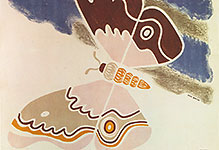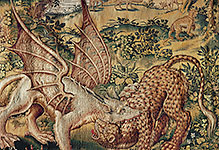
#030303 6
Running deer.Cave painting from Altamira,Santander, Spain.

#030303 7
Group of bisons.Cave painting from Altamira,Santander, Spain.

#03030312
Bone pendant decoration with the engraved drawing of a wolverine, Late Magdaleni...

#03030325
Black slipped and burnished jug in the shape of a bird, from Turkey, Yortan cult...

#03030328
Stone relief of a soldier on a horse from the palace of King Kapara, Aramaean, f...

#03030330
Ivory figure of a griffin-headed demon, Urartian, from Toprakkale in eastern Ana...

#03030331
Winged bull with human torso and head and clasped hands, from Toprakkale, easter...

#03030332
Bronze figure of a winged bull, from Toprakkale, eastern Turkey, late 8th BCE. P...

#03030335
Swimming reindeer, Late Magdalenien, around 12.500 years old. From the rock shal...

#03030336
Spearthrower carved as a mammoth, Late Magdalenian, about 12,500 years old. Spea...

#03030337
Perforated baton with horse and fish engravings, Late Magdalenian, about 12,500...

#03030342
Rock painting of hunting a snake or serpent from Zamora, Ecuador






